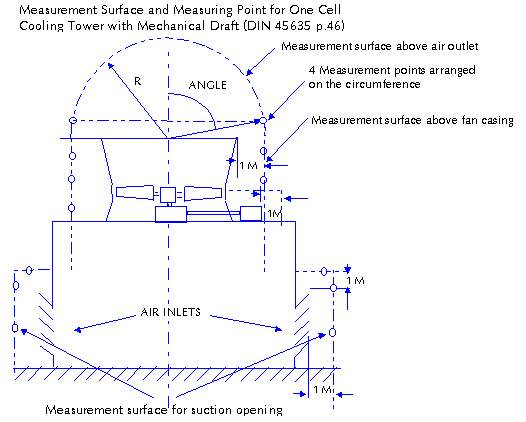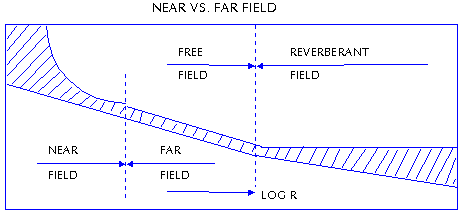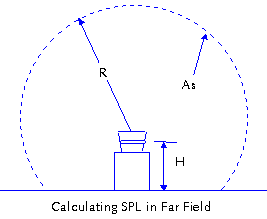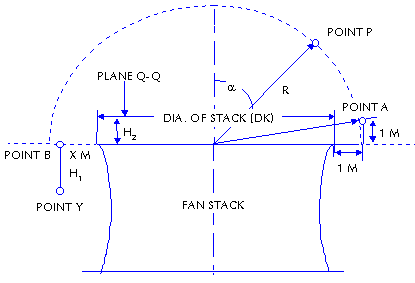|
|
|
|
|
The sound created in the air is caused by the diaphragm moving back and forth in the air which sets the air particles to vibrating, producing a variation in normal atmospheric pressure. As these pressure variations spread they may come into contact with our ear drums causing them to vibrate. The vibrations of our ear drums are then translated by our complicated hearing mechanisms into the sensations we call "SOUND". It should be noted here that sound is defined in two ways; first as a physical disturbance - in this case in the air, and secondly as a sensation in the ear of the listener. Normally when we hear the sound of an orchestra, we refer to it as music, something pleasing to the ear. But, if we were to hear an orchestra during the middle of our normal sleeping period this would then be noise to us. Noise is defined as unwanted sound. Sound, in turn, can be described as repeated pressure fluctuations characterized by its amplitude or sound pressure, its frequency in time, and its spatial variation or wave length. The velocity of sound in air is approximately 1,130 ft per second at standard temperature and pressure. Velocity, frequency, and wave length can be expressed by the equation: frequency x wavelength = velocity. Sound propagates in air as a longitudinal wave, that is a wave where the motion of small regions of the medium is parallel to the direction of propagation. These pressure variations will occur at a given position with the frequency (f), equal to the frequency of the source disturbance. The distance between pressure peaks at any instant in time will be the velocity divided by the frequency; Wavelength = c / f = 1130 / 1000 = 1.13 ft.
Since our hearing mechanism can only hear frequencies in the range of 20 Hz (CPS) to 20 KHz this is all that most sound level meters attempt to measure. Only those persons with very keen hearing are able to hear 20 Hz to 20,000 Hz. For this reason most codes are established to measure the sound energy between 45 Hz and 11.3 Khz inclusive. But the initial range mention has been divided into sub-divisions called octave bands, as given in below table, with the width of the band having a ratio for the lower frequency to the higher frequency of 2:1. These standard octave bands are named by their center frequencies. The purpose for dividing the frequency range up in this manner is because the ear seems to sense frequency on such a logarithmic scale. When more detailed analysis of the distribution of sound energy as a function of frequency is required the bands are normally divided into one-third octave bands. This form of analysis gives a better indication as to which frequencies are most troublesome and is very useful when noise levels are excessive and need to be lowered. The term of decibel has been borrowed from the electrical communications engineering group, and is a dimensionless quantity. By definition, it is 10 times the logarithm (to the base 10) of a quantity (in dimensional units), to some reference quantity (in the same dimensional units); with these units being proportional to power. It is most convenient to use this logarithmic scale because the range of acoustic powers that are of interest in noise measurement are approximately one quintillion to one (1018: 1). For example, the sound power of a soft whisper is about 0.000000001 watts (10-9), whereas, the sound power of a ram jet is about 100,000 watts. This wound be extremely difficult to plot on a linear scale but when plotted against decibels of sound power (with reference to 10-12 watts) these equal 30 and 170 decibels. As indicated in the previous paragraph, sound power is normally expressed as a power level with respect to a reference power. Power level (PWL) is defined as; PWL = 10 Log (W / 10-12) re 10-12 watts, where W is the acoustic power in watts and re means referred to. It sound be noted here that no instrument for directly measuring the power level of a source is available. Sound power is a measure of the intensity of a sound (watt/m2) at its source and cannot be measured directly at some distant point. From the elementary physics that the intensity I of a wave is defined as the time average rate which energy is transported by the wave per unit area across a surface perpendicular to the direction of propagation. More briefly, the intensity is the average power transported per unit area. Here we would note that the power developed by a force equals the product of force times velocity. Hence, the power per unit area in a sound wave equals the product of the excess pressure (force per unit area) times the particle velocity. Averaging over one cycle, it can be proved that I = rcv2 = P2/rc. Where P (= rcv) is the pressure amplitude, r is the average density of air, and c is the velocity of the sound wave. It will be noted that the intensity (power) is proportional to the square of the pressure amplitude, a result which is true for any sort of wave motion. Obviously what we measure with the sound-level meters are these pressure fluctuations which we read as decibels of sound pressure levels. The definition of sound pressure level (SPL) is 20 Log (P in mirobars/0.0002 microbars) or 10 Log (I/10-12), where P is the root mean-square sound pressure (RMS) of sound in question. The unit used to measure pressure here is the microbar which is approximately one-millionth of the normal atmospheric pressure (standard atmospheric pressure = 1,013,250 microbars). The reference sound pressure was obtained from the relation of P0 = (rcI0)1/2 = (400 x 10 -12) 1/2 = 2 x 10 -5 (Pascal). (rc is called Specific Acoustic Resistance and its value is about 400(SI).) If we can measure only sound pressure at some distant point from a source, how do we determine the sound power of the source in question? Let us investigate the manner in which the sound intensity radiates from a simple source. Assume for a moment that we have a small spherical sound source, such as a balloon, that radiates energy uniformly over its entire surface. Also, let this sphere be located far enough away from the ground and all other obstructions (free field) so that it will radiate energy uniformly in all directions. If the total energy is I0 at the sphere then the total energy at some given radius from the source will be spread over an area equal to the area of the sphere at this radius. This area is equal to 4 pr2. As we proceed radially outward from this sphere we notice that energy per unit area varies as the ratio of the square of the radii and, as we have already shown, this energy also varies as the square of the pressure. From this information we are able to write an expression for sound power level (PWL) as I = W / (Surface of Sphere
= 4 pr2) for free
field, or W = 4 pr2I,
where r is a distance from a source in meter. I = W / (Surface of Half
Sphere = 2pr2)
for half free field (= smooth ground level) From above equations, we can see that SPL at half free field is higher than SPL at free field by 3.01 dB(A). Most generally the sound source is setting on the ground with obstacles around it. These obstructions will either reflect or absorb this sound. Consider, for instance, a source that is setting on a flat reflective surface so that all the sound energy is being spread over a hemisphere. Obviously there is twice as much energy per unit area of any given hemisphere as there would be for a similar sphere of the same radius; assuming that we have the same uniform source. If we wished to calculate the free field sound power level of the source we would have to correct for this directivity factor. Here we should define exactly what is meant by directivity factor. It is the ratio of the mean-square pressure (or intensity) on a specified axis of a transducer and at a stated distance to the mean-square pressure (or intensity) with reference to the mean-square pressure that would be produced at the same position by a spherical source if it were radiating the same total acoustical power. A free field is assumed as the environment for the measurement. The point of observation must be sufficiently remote from the transducer for spherical divergence to exist. What does this mean? Here we are saying that our previously defined equations are good for a uniform sound source. Actually, there are few, if any, uniform sound sources. Most will radiate sound energy more directly in one direction than in others. The directivity factor is the ratio of the mean-square pressure at some point with reference to what a uniform source would radiate in that direction in free space. This says that a source may have a directivity factor of more than 1.0 in some directions and less in others. It also says that anytime sound is reflected, you change the direcivity factor. Let us take an example of what this means in actual practice. Suppose a customer buys some unit that is rated at 85 dB (SPL) in free field tests at some specified distance. He installs this unit in his place of business against a concrete wall and takes a reading at the specified distance with a calibrated sound-level meter. He determines the SPL to be 90 dB, and assumes the manufacturers did not correctly state the SPL at this distance. In actually, the manufacturers stated free field test results were probably accurate, but the customer did not properly consider such things as the room characteristics (reverberation, absorption, etc.) and the fact that the unit us not in free space. It would suffice to say here that obtaining proper sound power levels (PWL) and then applying these are complicated to say the least. A method of determining sound power that is used by the compressed air, and the fan and blower industry is essentially a comparison method but it is very effective in giving reproducible test results. This method requires the running of tests, usually in octave bands, of two sources. One being the source in question, the other being a calibrated reference sound source. The reference sound source (RSS) is a source with approximately the same sound spectrum as the source in question, but whose PWL has been determined from free field tests. The procedure goes like this:
So far, we have been discussing
sound from a purely physical view. What about our second
definition of sound. That of sound being the sensation
our ears translate as such. Three different filters,
called A, B, and C scales, are used to distinguish from
sound pressure levels. For example, a measurement of
80 dB on the A scale is reported as a sound level of
80 dB(A). It is well to note here that the A scale was
designed to correspond roughly to what our ears respond
to in the range of 0 dB to 65 dB over-all. The B scale
corresponds to the response in the range of 65 to 85
dB. The C scale, which is roughly linear, from 63 to
8000 Hz, corresponds fairly well to the ears response
above 85 dB. |




